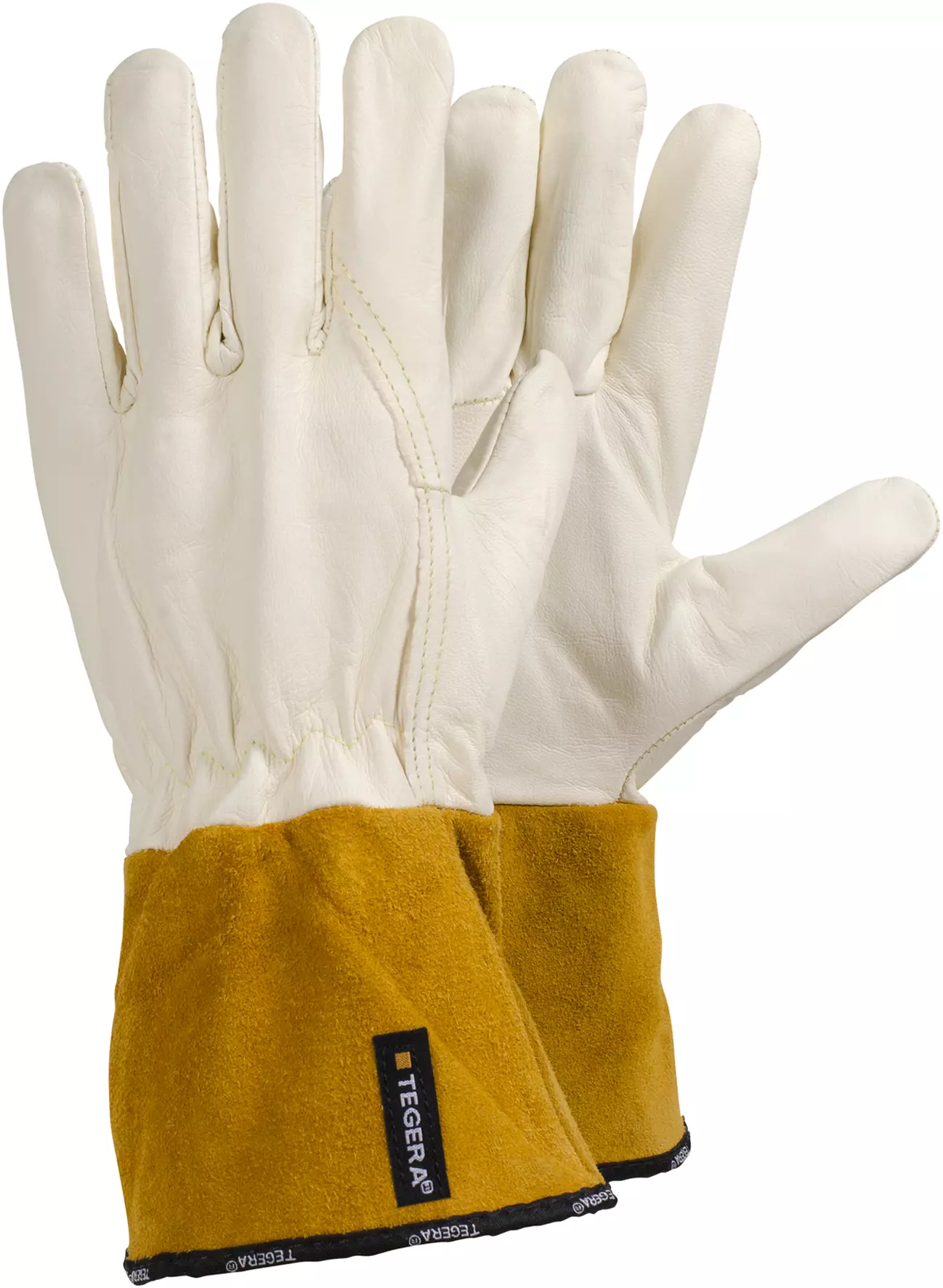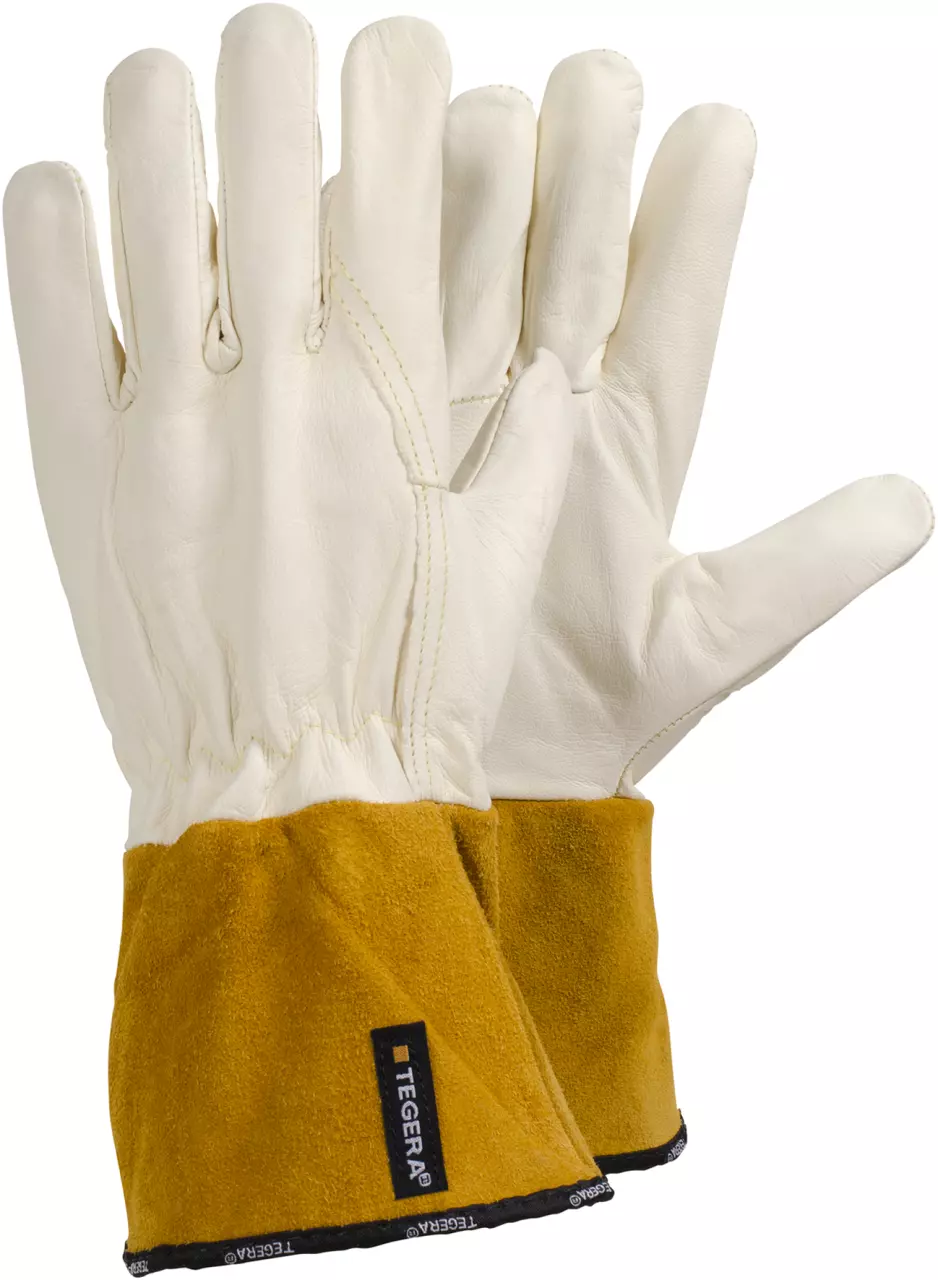
Tegera Leather Glove 11CVA
Tegera Leather Glove 11CVA
4.8 / 5


Features You'll Love

Cuff Style · Open
Determines how the glove secures around the wrist, affecting fit, protection from debris, and ease of putting gloves on and taking them off.
Determines how the glove secures around the wrist, affecting fit, protection from debris, and ease of putting gloves on and taking them off.
Determines how the glove secures around the wrist, affecting fit, protection from debris, and ease of putting gloves on and taking them off.

Palm Material · Goat leather
The material used on the palm side of the glove, affecting grip, durability, protection level, and comfort during use.
The material used on the palm side of the glove, affecting grip, durability, protection level, and comfort during use.
The material used on the palm side of the glove, affecting grip, durability, protection level, and comfort during use.
312,80 €
Price per 12 pairs
26,07 € / pair
Choose size
Free delivery
Features You'll Love

Cuff Style · Open
Determines how the glove secures around the wrist, affecting fit, protection from debris, and ease of putting gloves on and taking them off.
Determines how the glove secures around the wrist, affecting fit, protection from debris, and ease of putting gloves on and taking them off.
Determines how the glove secures around the wrist, affecting fit, protection from debris, and ease of putting gloves on and taking them off.

Palm Material · Goat leather
The material used on the palm side of the glove, affecting grip, durability, protection level, and comfort during use.
The material used on the palm side of the glove, affecting grip, durability, protection level, and comfort during use.
The material used on the palm side of the glove, affecting grip, durability, protection level, and comfort during use.
Product description
TEGERA® 11CVA, Welding and thermal protection glove, 0,7-0,9 mm high quality buckskin, Cat. III, reinforced seams, free of chromium, general purpose
TEGERA® 11CVA, Welding and thermal protection glove, 0,7-0,9 mm high quality buckskin, Cat. III, reinforced seams, free of chromium, general purpose
TEGERA® 11CVA, Welding and thermal protection glove, 0,7-0,9 mm high quality buckskin, Cat. III, reinforced seams, free of chromium, general purpose
The material used on the back of the glove, affecting breathability, flexibility, protection level, and overall comfort during wear.
The material used on the palm side of the glove, affecting grip, durability, protection level, and comfort during use.
The composition and construction materials of the gloves, determining protection level, durability, comfort, and suitability for specific work hazards.
Multi-purpose design offers versatile protection and comfort, ready for a wide range of tasks.
Full finger coverage offers complete protection and warmth, keeping your hands safe and comfortable.
Determines how the glove secures around the wrist, affecting fit, protection from debris, and ease of putting gloves on and taking them off.
- Cut Resistant
- Heat & Flame Resistance
- Welding
- Hand Protection
Protective clothing and gloves with the EN 1149-2:1997 rating are tested for the electrical vertical resistance of their material. This ensures the fabric can safely dissipate static electricity through its thickness, reducing the risk of sparks in flammable environments or damage to sensitive electronic components.
Test results
This garment's material has been tested to safely dissipate electrostatic charge. It helps prevent sparks by allowing electricity to pass through the fabric, reducing the risk of fire or explosion in sensitive work environments.
Gloves with the EN 407:2004 rating are tested for protection against various thermal risks including flammability, contact heat, convective heat, radiant heat, and splashes of molten metal. This means you can choose gloves that offer certified protection against specific heat and fire hazards for your safety.
Test results
Offers the highest level of protection (Level 4) against large splashes of molten metal, like iron. Built for demanding industrial jobs such as foundry work, providing essential safety when exposed to significant molten material splashes.
Provides the highest level of protection against catching fire when exposed to a naked flame. After the flame is removed, the material will stop burning within 2 seconds and stop glowing within 5 seconds.
Provides protection when briefly touching hot objects. Certified for contact with surfaces up to 100°C for at least 15 seconds, offering short-term protection against burns from items like hot cookware or machinery parts.
Provides moderate protection by delaying heat transfer from an open flame. Ideal for tasks where hands are near, but not touching, a flame, giving you more time to move away safely from the heat source.
This product was not tested for protection against radiant heat, which is intense heat that can be felt from a distance. It does not claim to offer protection for tasks involving prolonged exposure to radiant heat sources.
Provides the highest level of protection against large splashes of molten metal, tested to resist amounts greater than 200 grams. This makes it essential for high-risk industrial jobs like foundry work and heavy welding.
Welding gloves with the EN 12477:2001/A1:2005 rating are tested for protection against hazards like molten metal splashes, flames, heat, and mechanical risks during welding. This ensures your hands and wrists are reliably protected, allowing you to work safely.
Protective gloves with the EN 420:2003+A1:2009 rating are tested for general design, safe materials (innocuousness), water penetration, comfort, and dexterity. This ensures the gloves are safe, fit correctly, and allow you to perform tasks effectively without discomfort.
Protective gloves with the EN 388:2016 rating are tested for resistance against mechanical risks like abrasion, cuts, tears, punctures, and optional impact. This rating helps you quickly identify and choose gloves that offer the right level of protection for your hands during various tasks.
Test results
Offers moderate resistance against snagging or catching on rough objects, preventing small rips from growing.
Provides basic protection against punctures from blunt objects like splinters, not sharp points like needles.
Provides the highest level of cut protection, passing a specialized test for materials that dull blades.
Provides minimal protection against cuts from a rotating blade under constant, low force.
Withstands moderate rubbing and friction, offering good protection for tasks involving handling rough materials.
PPE stands for "personal protective equipment." PPE Category 3 refers to equipment that is complex and provide the highest level of protection such as powered respirators, SCBA, and full body suits. In Europe, PPE Category 3 must meet certain safety standards set by the European Union, which means that it must be designed and manufactured to protect the user without causing harm. Companies that make or sell PPE must prove that it meets these standards. They also must have a quality management system in place, have to be audited regularly by a notified body and have to have a technical documentation.
Free delivery for all Ejendals products